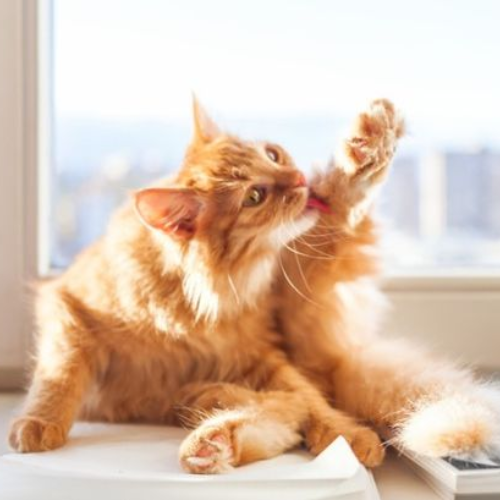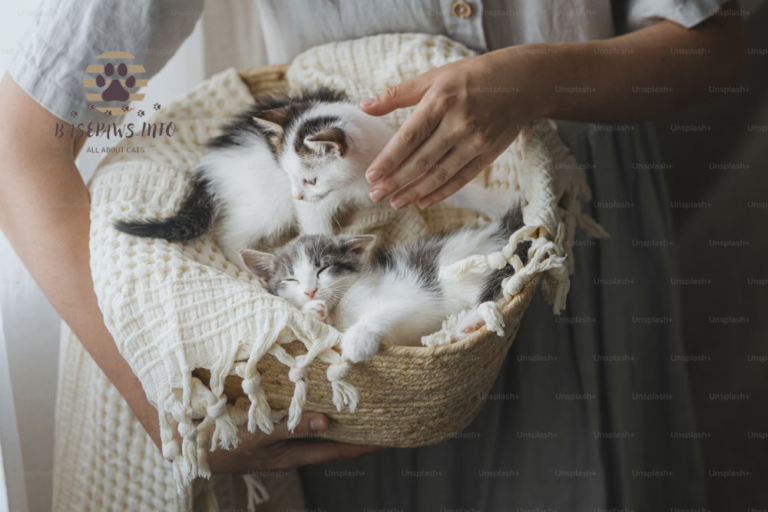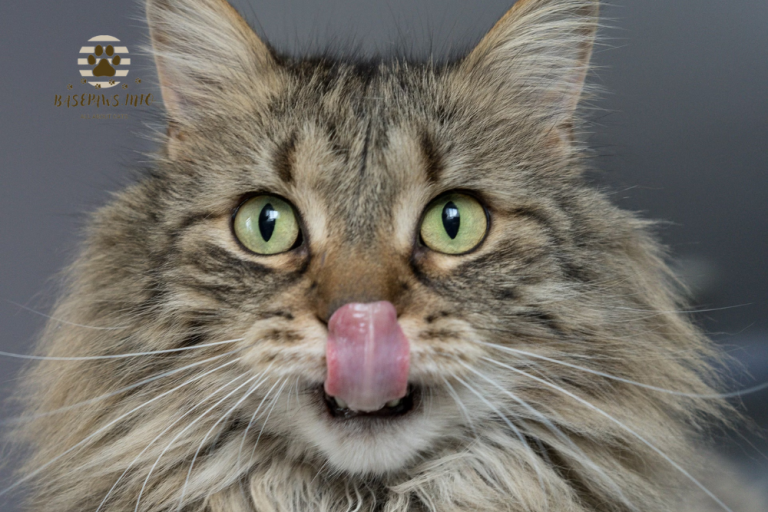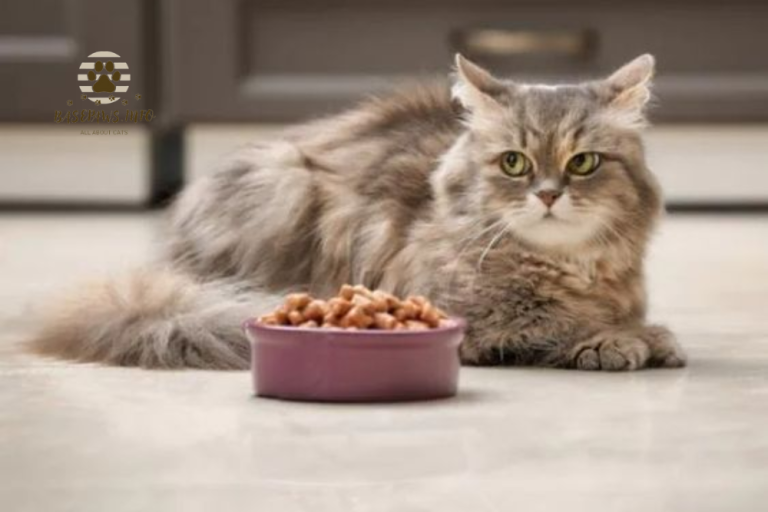Benadryl for Cats – Everything You Need to Know
Introduction
It’s common for cat owners to feel concerned when their beloved pet experiences discomfort from allergies, motion sickness, or anxiety. Whether it’s itching, sneezing, or stress from travel, these problems can cause significant distress to both the cat and its owner. You may wonder if there’s a solution within easy reach. Fortunately, Benadryl, a well-known over-the-counter medication, can be a useful remedy for these issues—when used properly.
Whether you’re trying to alleviate allergies or calm your anxious cat before travel, Benadryl could be a viable option. But before giving it to your pet, it’s important to understand how it works, how much to give, and how to avoid side effects. Read on for a detailed explanation of everything you need to know about giving Benadryl to cats.
What is Benadryl?
Benadryl, generically known as diphenhydramine, is a popular antihistamine medication used to treat a variety of allergy symptoms in humans, and it’s also commonly used for pets. This drug works by blocking the effects of histamine, a substance produced in the body during allergic reactions that causes symptoms like itching, sneezing, and swelling.
How Does Benadryl Work?
In both humans and cats, Benadryl works by inhibiting the histamine receptors in the body. Histamine is responsible for many symptoms associated with allergies, such as itching, hives, and swelling. By blocking these receptors, Benadryl prevents histamine from triggering these symptoms, making it an effective remedy for allergic reactions, whether from pollen, dust, or insect bites.
Is Benadryl Safe for Cats?
Can You Give Cats Benadryl?
Yes, you can give Benadryl to cats, but it’s crucial to administer it under the guidance of a veterinarian. While Benadryl is generally considered safe, the dosage and method of administration differ from what humans would take. Always consult your vet before giving Benadryl to your cat, especially if they have underlying health conditions.

Risk Factors and Safety Considerations
Certain cats should not take Benadryl, especially if they have pre-existing conditions like glaucoma, urinary retention, high blood pressure, or heart disease. Additionally, pregnant or lactating cats should avoid taking Benadryl unless a vet explicitly approves it. Always disclose your cat’s health history to your vet before starting any new medication.
When Not to Use Benadryl for Cats
You should avoid giving Benadryl to your cat if they are already on medications that could interact negatively with antihistamines. These could include sedatives, certain pain relievers, or any drugs that affect the central nervous system. If your cat has previously had an adverse reaction to diphenhydramine, you should avoid using it.
Uses of Benadryl for Cats
General Allergy Relief
Benadryl is often used for mild allergy symptoms in cats, such as sneezing, runny eyes, itching, or mild skin irritation caused by environmental allergens like pollen or dust mites. If your cat experiences seasonal allergies, Benadryl can help reduce the discomfort they feel.
Acute Allergic Reactions (Insect Bites, Vaccine Reactions)
Benadryl is particularly useful for acute allergic reactions, such as insect bites, stings, or vaccine reactions. In these cases, Benadryl can help reduce swelling and inflammation quickly. However, if your cat has a severe reaction (difficulty breathing or extreme swelling), this is a medical emergency, and you should seek veterinary care immediately.
Anti-Nausea and Motion Sickness
Another common use for Benadryl in cats is to reduce motion sickness and nausea, especially for long car trips or flights. The drug has antiemetic properties that help settle the stomach and prevent vomiting, making it useful for cats that struggle with car rides.
Sedation for Anxiety or Sleep
Due to its mild sedative effects, Benadryl can also be used to calm cats experiencing anxiety from stressful events like traveling, grooming, or thunderstorms. The sedative properties of diphenhydramine can help induce mild sleepiness, making it easier for your cat to relax in stressful situations.
Additional Uses
In some cases, veterinarians may recommend Benadryl for treating mild respiratory issues, as it can help open airways in certain conditions. However, this should only be done under veterinary supervision.
How to Administer Benadryl to Cats
Liquid vs. Pill Form: Which is Better?
When it comes to administering Benadryl to cats, both liquid and pill forms are available, but liquid forms are generally easier to dose accurately and administer. However, be careful when choosing liquid Benadryl, as many liquid formulations contain alcohol or xylitol, which are toxic to cats. Make sure to read the ingredient list carefully before purchasing.
Step-by-Step Guide to Giving Benadryl
- Consult Your Vet: Get the correct dosage from your veterinarian.
- Prepare the Medication: For liquid forms, measure out the correct amount using a syringe; for pills, crush and mix with food or use pill pockets.
- Administer Carefully: Gently hold your cat, keeping them calm, and slowly administer the medication.
- Follow Up: Observe your cat for any side effects or adverse reactions after giving Benadryl.
How to Flavor or Mix Benadryl with Food
If your cat refuses to take Benadryl directly, you can mix it with a small amount of wet food or use pill pockets to hide the taste. Another option is to use a flavored liquid specifically designed for pets, which makes administration easier.
Ask Your Vet: Dos and Don’ts
Don’t exceed the recommended dosage or frequency without veterinary guidance.
Do consult your vet before giving Benadryl.
Don’t use gel capsules, as they may contain additives harmful to cats.
Do follow proper dosing instructions.

Benadryl Dosage for Cats
How Much Benadryl Should I Give My Cat?
The general rule for dosing Benadryl is 1 milligram per pound of your cat’s body weight. For example, a cat weighing 10 pounds should receive 10 milligrams of Benadryl. Always confirm the exact dosage with your vet.
| Cat Weight | Benadryl Dosage (mg) |
| 5 lbs | 5 mg |
| 10 lbs | 10 mg |
| 15 lbs | 15 mg |
Dosage Guidelines Based on Weight
Benadryl is available in both tablet and liquid form. You can split the tablet if necessary to achieve the right dose or measure liquid medication carefully using a syringe.
Frequency of Dosing
Benadryl can typically be given to your cat every 8 to 12 hours, but confirm this with your veterinarian to avoid overdosing or underdosing.
Avoiding Overdose
Never exceed the recommended dosage. Symptoms of overdose include extreme drowsiness, rapid breathing, or seizures. If you suspect an overdose, contact your vet immediately.
Side Effects and Precautions
Common Side Effects
- Drowsiness
- Dry mouth
- Vomiting
- Lethargy
Uncommon Side Effects
- Hyperactivity
- Foaming at the mouth (often due to bad taste)
- Increased heart rate
Benadryl Overdose: Symptoms and Emergency Actions
Signs of overdose include:
- Excessive drowsiness
- Dilated pupils
- Difficulty breathing
- Seizures
If you suspect your cat has overdosed on Benadryl, take them to the vet or an emergency animal clinic immediately.
Monitoring Your Cat for Reactions
After giving Benadryl, keep an eye on your cat for any unusual behaviors or side effects. If they refuse to eat, vomit, or seem overly lethargic, consult your veterinarian for further advice.
Natural Alternatives to Benadryl for Cats
While Benadryl can be effective for treating allergies, nausea, and anxiety in cats, some pet owners prefer natural alternatives to avoid potential side effects or if they are looking for holistic approaches. Here are some natural remedies that can help alleviate allergy symptoms and related conditions in cats.
1. Herbal Remedies for Cat Allergies
a. Quercetin
- What It Is: Quercetin is a natural plant flavonoid found in many fruits and vegetables, known for its antioxidant and anti-inflammatory properties.
- How It Helps: It acts similarly to antihistamines by stabilizing mast cells and preventing the release of histamine, making it beneficial for cats suffering from allergies.
- Dosage: Consult your veterinarian for the appropriate dosage, as it may vary based on your cat’s weight and health condition.
b. Licorice Root
- What It Is: Licorice root is an herb known for its soothing effects and ability to reduce inflammation.
- How It Helps: It contains glycyrrhizin, which has anti-inflammatory properties that can help relieve allergy symptoms.
- Dosage: The recommended dosage is typically 1/4 teaspoon of dried licorice root per 10 pounds of body weight. However, always consult your vet before administering any herbal supplements.

c. Butterbur
Dosage: Always follow your vet’s advice on the dosage, as it may vary based on the preparation used.
What It Is: Butterbur is an herbal remedy derived from the leaves of the butterbur plant, often used for treating allergies.
How It Helps: Studies have shown that butterbur can be as effective as antihistamines in reducing allergy symptoms without causing drowsiness.
2. Omega-3 Fatty Acids
- What They Are: Omega-3 fatty acids are essential fats commonly found in fish oil and certain plant oils.
- How They Help: These fatty acids have anti-inflammatory properties that can help reduce allergy symptoms and support overall skin health.
- Sources: You can provide omega-3 fatty acids through supplements specifically designed for pets or by adding fish oil to your cat’s diet.
- Dosage: A typical dosage is about 100 mg of fish oil per 10 pounds of body weight. Consult your veterinarian for personalized recommendations.
3. Pumpkin Puree
- What It Is: Plain canned pumpkin (not the spiced pie filling) is a natural source of fiber and nutrients.
- How It Helps: Pumpkin can help soothe the digestive system, making it beneficial for cats experiencing nausea or upset stomach due to motion sickness or dietary changes.
- Dosage: Offer your cat 1 teaspoon of pumpkin puree mixed with their food. Monitor their response and adjust as needed.
4. Ginger
- What It Is: Ginger is a well-known herb used for its medicinal properties.
- How It Helps: It has anti-nausea effects and can help with digestive issues, making it a good option for cats that experience motion sickness or gastrointestinal distress.
- Dosage: You can give your cat a small amount of ginger (fresh or powdered) mixed into their food. Start with about 1/8 teaspoon and monitor their reaction.
5. Local Honey
- What It Is: Local honey contains trace amounts of local pollen, which may help build your cat’s immunity to local allergens.
- How It Helps: Feeding small amounts of local honey can help reduce allergic reactions over time.
- Dosage: Offer 1/4 teaspoon of local honey daily. However, avoid giving honey to kittens or cats with compromised immune systems.
6. Probiotics
- What They Are: Probiotics are beneficial bacteria that support digestive health and immune function.
- How They Help: A healthy gut microbiome can help manage allergy symptoms and support overall health, making probiotics a great natural alternative.
- Sources: You can find probiotics specifically formulated for cats in pet stores or from your veterinarian.
- Dosage: Follow the dosage instructions provided with the product, as they can vary based on the probiotic strain.
7. Essential Oils (Use Caution)
- What They Are: Essential oils are concentrated extracts from plants.
- How They Help: Some essential oils, like lavender, can have calming effects and help reduce anxiety in cats.
- Caution: Not all essential oils are safe for cats, as they have a different metabolism and can be toxic to them. Always consult your veterinarian before using essential oils, and ensure proper dilution and application methods.
Can I mix herbs?
Mixing herbs can be beneficial in some cases, as certain herbs can complement each other’s effects and provide enhanced therapeutic benefits. However, it’s essential to approach this practice with caution, especially regarding your cat’s health. Here’s a detailed look at the considerations, benefits, and guidelines for mixing herbs for cats:
Considerations for Mixing Herbs
- Consult a Veterinarian: Before introducing any new herbs or mixtures into your cat’s diet, it’s crucial to consult with a veterinarian, particularly one knowledgeable about herbal medicine. They can help you determine the appropriate herbs and dosages for your cat’s specific health needs.
- Understand the Herbs: Research the properties of each herb you plan to mix. Some herbs may have similar effects (like being anti-inflammatory), while others may counteract each other or lead to unwanted side effects.
- Check for Allergies: Cats can have allergies just like humans. Always introduce any new herb gradually and monitor your cat for any adverse reactions, such as vomiting, diarrhea, or signs of discomfort.
- Be Aware of Dosage: Different herbs have different recommended dosages. When mixing herbs, ensure that the total dosage remains within safe limits for each individual herb.
- Consider the Form: Herbs can come in various forms, such as dried, powdered, tinctures, or teas. Mixing herbs of different forms may affect their efficacy and safety.
- Avoid Toxic Herbs: Some herbs are toxic to cats, such as garlic, onion, and certain essential oils. Ensure that any herbs you choose are safe for feline consumption.
Benefits of Mixing Herbs
- Synergistic Effects: Some herbs can enhance each other’s effects. For example, combining an anti-inflammatory herb with one that supports immune function could lead to better overall health benefits for your cat.
- Customizable Remedies: Mixing herbs allows for personalized treatment options that can be tailored to your cat’s specific needs and health conditions.
- Improved Palatability: Some herbs can mask the taste of others that your cat may not like, making it easier to administer the mixture.
Popular Herb Combinations for Cats
- Chamomile and Lavender: Both herbs have calming properties, making this combination useful for anxious cats.
- Ginger and Peppermint: This mixture can help with nausea and digestive issues, benefiting cats prone to motion sickness or upset stomachs.
- Licorice Root and Marshmallow Root: Both herbs can soothe digestive issues and have anti-inflammatory properties, making them a good option for cats with gastrointestinal discomfort.
Guidelines for Mixing Herbs
- Start with Small Quantities: When first introducing a mixture, use small amounts and gradually increase as your cat gets used to it.
- Monitor Your Cat: After introducing a new herb mixture, watch for any changes in your cat’s behavior, appetite, or health.
- Avoid Long-Term Use: Some herbs are best used for short periods. Consult your vet about how long you can safely use a mixture before needing a break.
- Store Properly: Store any herbal mixtures in a cool, dry place, away from direct sunlight to maintain their potency.
Mixing herbs for your cat can be a valuable tool in managing health issues, but it requires careful consideration and preparation. Always consult with a veterinarian before combining herbs, and closely monitor your cat’s response to any new herbal remedies. With the right approach, you can safely utilize herbal combinations to support your feline friend’s well-being.
Frequently Asked Questions (FAQs)
How Long Does It Take for Benadryl to Work in Cats?
Benadryl usually takes effect within 30 minutes after administration. You should notice relief from allergy symptoms or motion sickness within that time frame
Can I Use Benadryl for Kittens?
Benadryl is not typically recommended for kittens under 12 weeks of age without veterinary guidance. Consult your vet for alternative treatments if your kitten requires assistance.
What If My Cat Refuses to Take Benadryl?
If your cat is resistant to taking Benadryl, try mixing it with their food or using a flavored liquid designed for pets. You can also consult your vet for alternative formulations or methods.
Understanding how to safely use Benadryl for your cat can provide significant relief for various conditions, from allergies to anxiety. While it can be a useful tool, always consult your veterinarian for proper dosage and safety considerations. If you have concerns about side effects or efficacy, they can help you explore alternative treatments that suit your cat’s needs.
By staying informed and vigilant, you can ensure your cat remains comfortable and healthy while effectively managing their symptoms with Benadryl when necessary.







